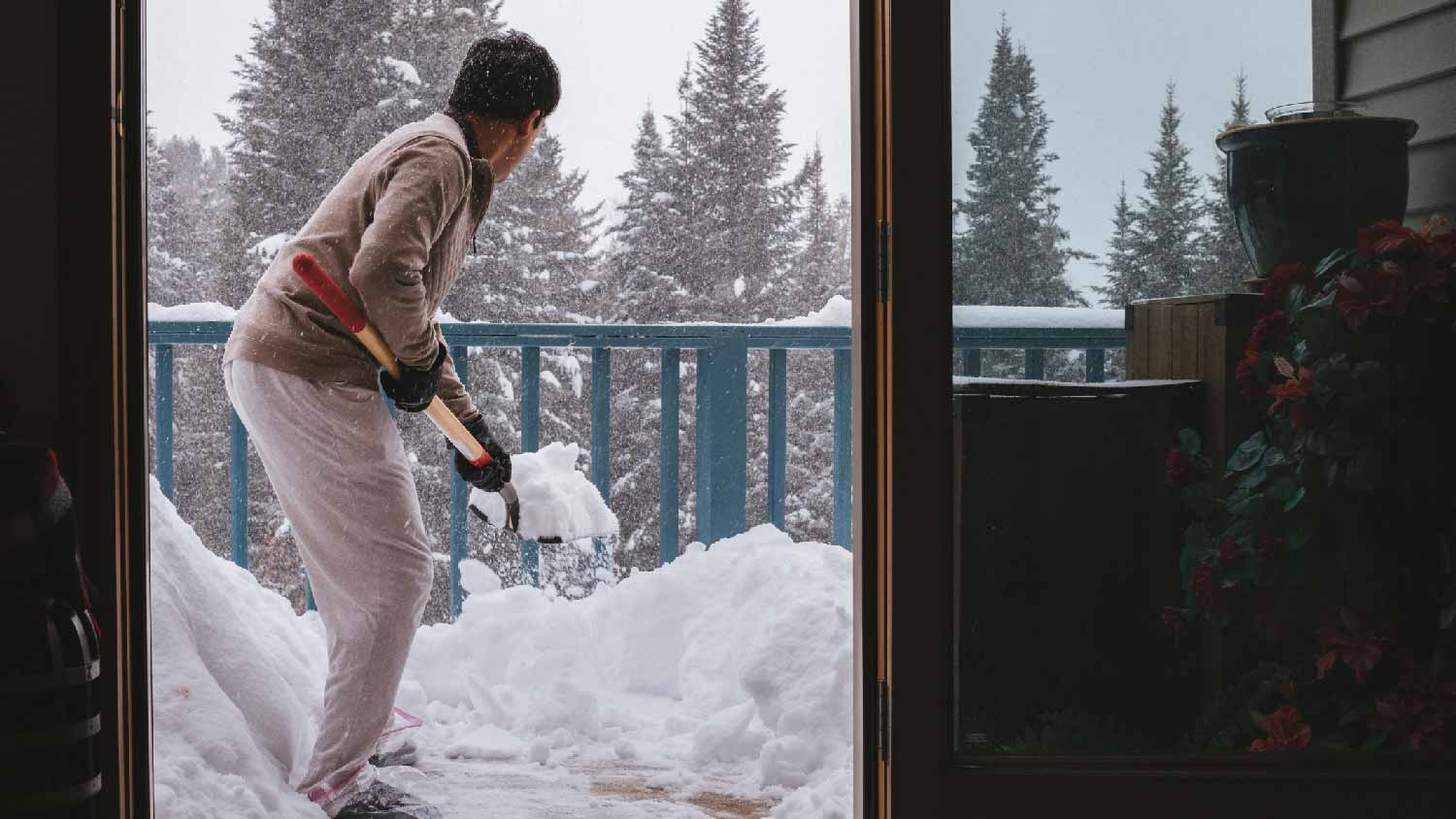
If you’re updating a deck or staircase with a modern railing, you may be wondering how much cable railing costs. We dive into the cost factors you need to know.
Deck the halls with weatherproof sealant


A deck provides additional outdoor living space to soak up the sun, eat al fresco, or entertain friends and family throughout the summer. But during the colder months, your deck can be vulnerable to damage—especially if you live somewhere that experiences harsh temperatures, snow, and ice. This guide explains how to winterize your deck to protect it from the elements and keep it in tip-top shape for years.
First, check your deck for any damage and repair it before winterizing. A wooden deck may have rotting boards, loose nails, or worn-out stair treads. You can repair minor damage with some nails or by replacing a couple of boards, but more significant damage is best left to a pro who builds decks to repair.
.jpeg?impolicy=leadImage)
Once you’ve given your deck the all-clear, it’s time to clean off the dirt and grime that’s accumulated over the summer. Cleaning your deck not only improves its appearance but can also help protect it from harsh winter weather.
Use a broom to sweep off debris, then wash the deck with a deck-cleaning solution and a power washer or cleaning brush.
Avoid using a power washer if you have an older wooden deck, as it can cause damage. Alternatively, hire a pro to pressure wash the deck to help prevent unintentional damage.
After washing, ensure the boards are completely dry to allow the solution to penetrate the pores. Then, use a brush or roller to apply deck stain or sealant to the boards. Let the sealer dry completely, and add a second coat if the product manufacturer recommends.
Rather than leave your outdoor furniture to fend for itself against the cold, harsh winter weather, consider storing it in a shed, garage, or basement. Alternatively, if you don’t have the space, you can cover your outdoor furniture with a tarp or furniture cover and leave it on the deck over the winter.

Over the winter, protect your deck from damage by removing snow and ice periodically. Although it’s tempting to let winter precipitation sit on the deck if you’re not using it, doing so can cause damage to the surface. Use a plastic snow shovel or a snow blower to remove snow from the deck, then apply ice melt to prevent the moisture from refreezing.
The best time to winterize your deck is early fall before temperatures get too low. Depending on the climate where you live, you might need to start the process as early as September or as late as early November. If you wait too long, it might be too cold to use deck cleaner and sealer, which leaves your deck vulnerable to damage from the winter weather and temperatures. Failure to properly winterize your deck means you’ll have to budget for the cost to build a new deck sooner.
Winterizing a deck is a doable DIY project. However, it’s also a time- and labor-intensive process, and not all homeowners are up to the task. If you have time or physical limitations, the best course of action is to hire a local deck-building company offering cleaning services. Although hiring a pro makes this project more expensive, it can save you money on deck repairs and replacement in the long run.
Hiring a pro to pressure-wash your deck costs around $150 but can be as much as $500, depending on the deck’s size and condition. Meanwhile, staining a deck costs between $550 and $1,250. Remember that you don’t need to stain your deck every year; if the previous stain still repels water, you can simply clean the deck and skip the staining.
From average costs to expert advice, get all the answers you need to get your job done.

If you’re updating a deck or staircase with a modern railing, you may be wondering how much cable railing costs. We dive into the cost factors you need to know.

Cedar is a popular decking material, best known for its natural wooden look and resistance to rot. So, how much does a cedar deck cost? Find out in this guide.
Deck repair costs depend on materials, damage you need to fix, and more. See how much it costs to replace or repair a deck in Columbus, OH.

A tired-looking deck doesn’t mean you have to replace the entire thing. Learn about these common PVC decking problems and how you can fix them.

Discover the cost to build an arbor in your yard. Learn about average prices, key cost factors, and tips to save on your arbor installation project.

Discover floating deck cost estimates, including average prices, installation factors, and ways to save. Learn what impacts your floating deck cost.